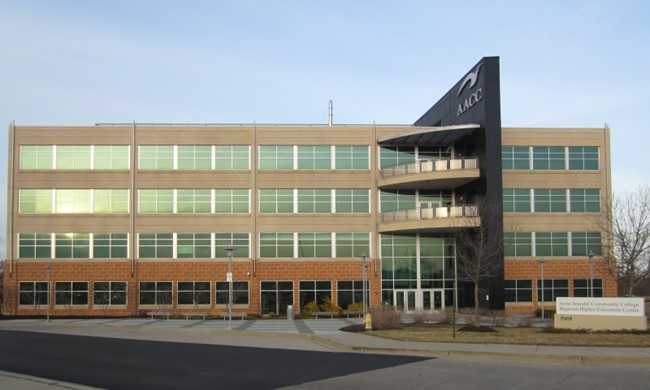
Anne Arundel Community College
Community College Enrollment is Plummeting. But There May Be Another Way.
College enrollment has declined ever since the start of the coronavirus pandemic. At public community colleges, however, the drop is even more significant—with data showing a whopping 7.8% enrollment decline since spring 2021. For comparison, public four-year colleges had a 3.4% decline, and private nonprofit four-year colleges had a 1.7% decline.
Inside Higher Ed recently sat down with two national experts to discuss why community colleges are experiencing an enrollment plateau and whether enrollment will start to climb again.
THE IMPACT OF THE PANDEMIC
Traditionally, college enrollment has been directly tied to the unemployment rate. When the economy suffers and the unemployment rate is high, more people enroll in college. But the pandemic, experts say, brought on a new set of obstacles for prospective students.
“They had to deal with kids who couldn’t go to school, transportation systems they did not want to utilize,” Joe Garcia, chancellor of the Colorado Community College system, tells Inside Higher Ed. “And so we saw a decline in employment but also a decline in enrollment. Those two rarely go together.”
As the job market began to bounce back, so did a new demand for workers lured by higher pay.
“So many of our students and potential students saw the opportunity to suddenly make $16 or $18 now or get a $500 bonus for coming back,” Garcia explains. “And so they said, ‘Why would I go to college now—now’s the opportunity to make up for some of the lost wages over the last year and a half?’”
The decline in community college enrollment, Garcia says, has had a significant impact on many higher education institutions.
“We’re not able to staff the way we should, and particularly in areas like financial aid and student support services, exactly the areas that need to be fully staffed to serve the populations that will close the equity gaps we’ve been so focused on in recent years,” he says. “And now we’re beginning to see those gaps widen once again, that is not a good place for our colleges, and it’s not a good place for our country.”
ONLINE EDUCATION NO LONGER A COMPETITIVE DISTINCTION
Prior to the pandemic, community colleges had an advantage to public four-year universities in the online education space. But that’s no longer a distinction that only community colleges can tout.
“Before the pandemic, [some] public four-year universities were very good at providing a lot of online classes, but the vast majority of them weren’t,” Nate Johnson, a researcher and policy analyst whose firm, Postsecondary Analytics, advises states, foundations and businesses on education and workforce policy, tells Inside Higher Ed. “Most majors you would be interested in weren’t available online. Post-pandemic, everything was available online, because it had to be. Now, those [four-year] institutions have a lot more capacity to offer online programs, so community colleges have lost a bit of that advantage.”
WHAT CAN COMMUNITY COLLEGES DO?
The pandemic wreaked havoc on community colleges. And experts aren’t optimistic that community colleges will ever bounce back to pre-pandemic levels. But, Garcia says, there are tangible steps that local colleges can take to see growth.
“One is focusing more on adult learners,” he says. “Community colleges have always served adult learners. But frankly, we had seen the average age for our students going down in recent years as we looked at more traditional students. But we’re all competing for traditional students, and that’s a shrinking population. There are a lot of adults out there who would love to have a better job, an actual career, and they can’t do it without coming back and getting an education. But that means we’ve got to change how we deliver instruction, we’ve got to do more online, we’ve got to offer more classes in the evenings and the weekends.”
Additionally, Garcia says, community colleges need to focus on supporting students and giving them the tools to succeed when they advance beyond the campus.
“In the old days, when I first started community college, we were just trying to enroll as many students as we could,” he says. “We knew we were going to lose a lot of them before graduation, before the end of their first semester. In recent years, I’ve been pleased that we’ve been more focused on what it takes not just to enroll students, but to retain and graduate them. And what we’re now focused on is not just that, but whether we’re graduating them with a credential that will allow them to get a living-wage job. We’ve got to have that broader focus, if we want students to keep showing up and paying for our services.”
Sources: Inside Higher Ed, National Student Clearinghouse Research Center











Questions about this article? Email us or leave a comment below.